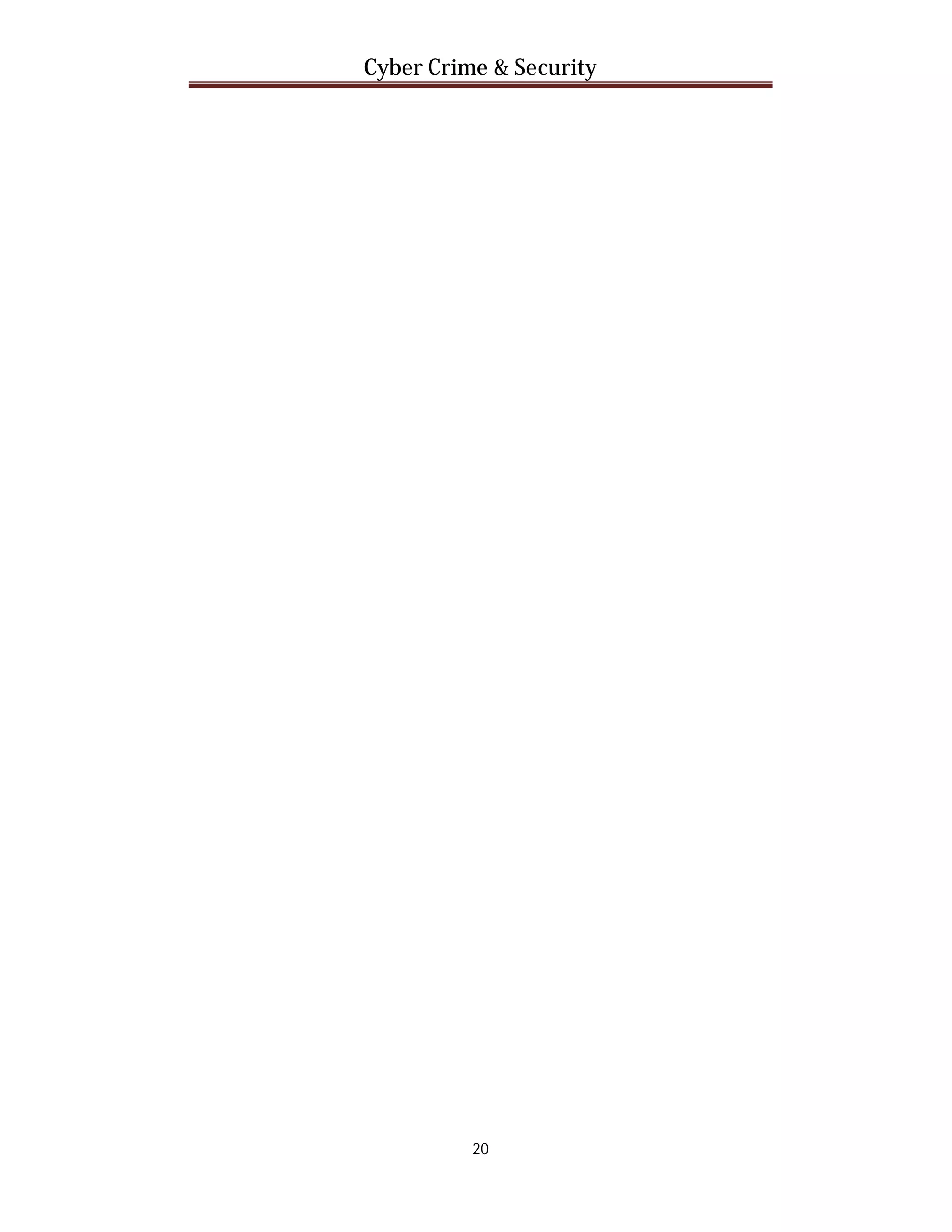This document provides an overview of cyber crime and security. It discusses how cyber crime has evolved with technology and can take many forms, from identity theft to illegal hacking. The document then defines cyber crime and outlines some common types, including botnets, Trojan horses, and phishing. It also discusses crimeware tools used by cyber criminals and provides basic tips to prevent cyber crime.
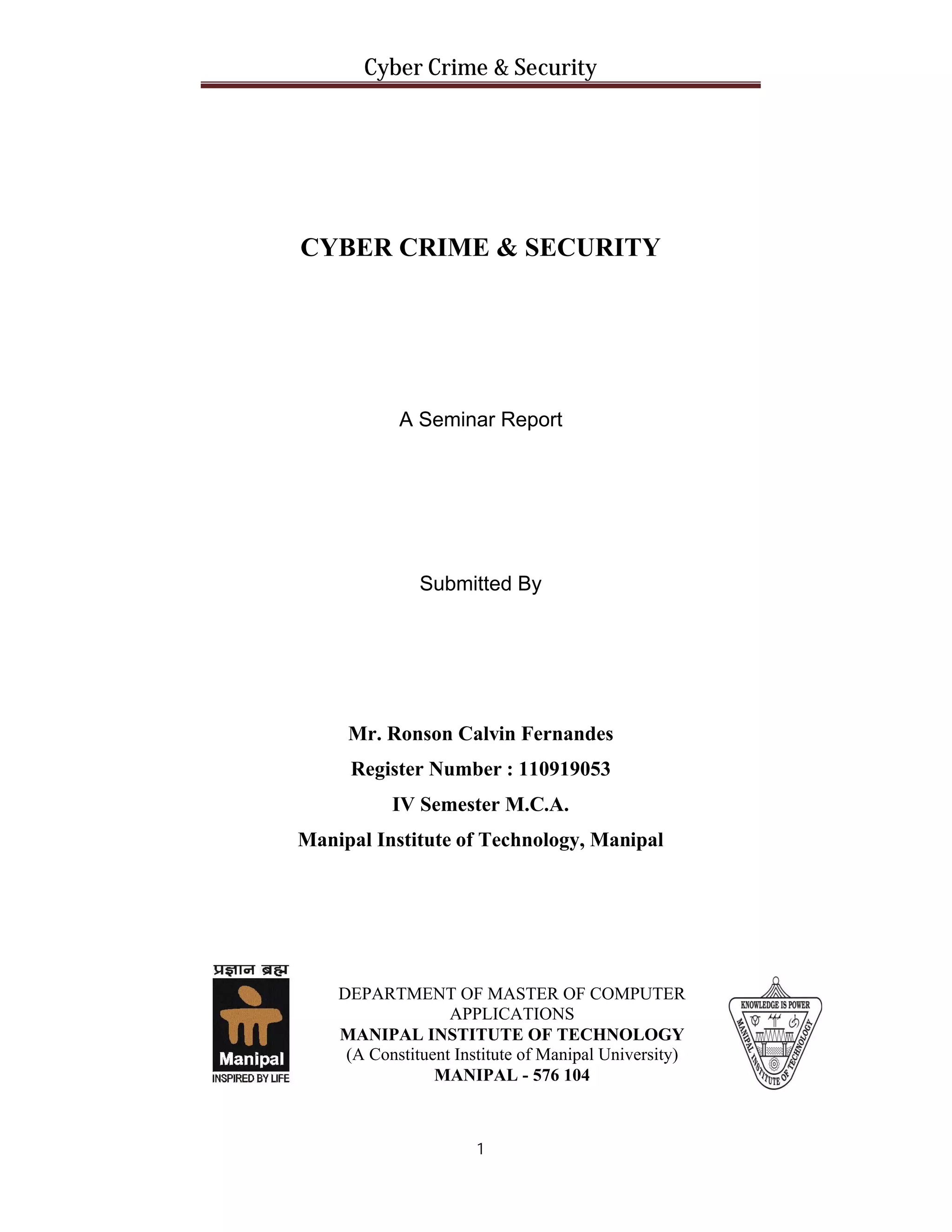
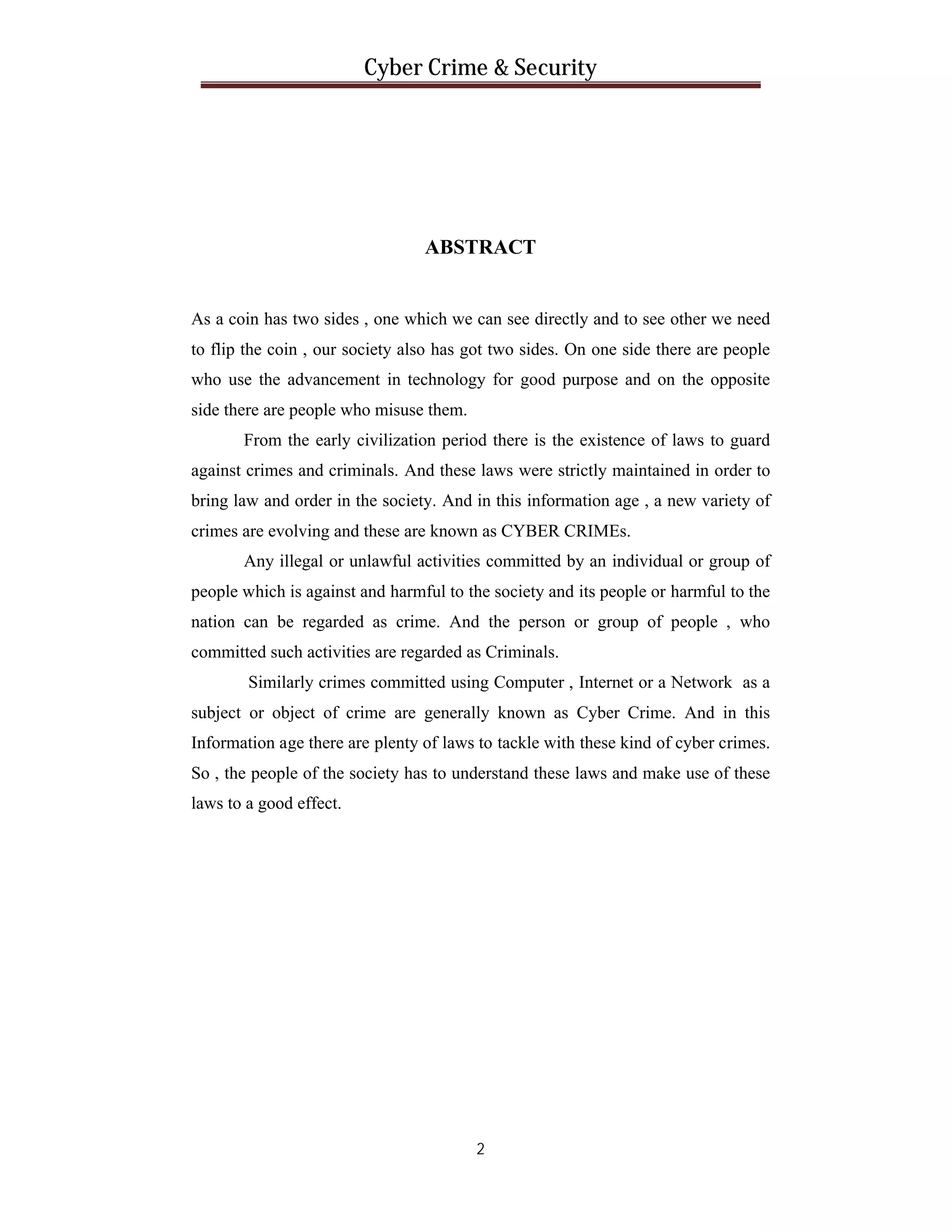
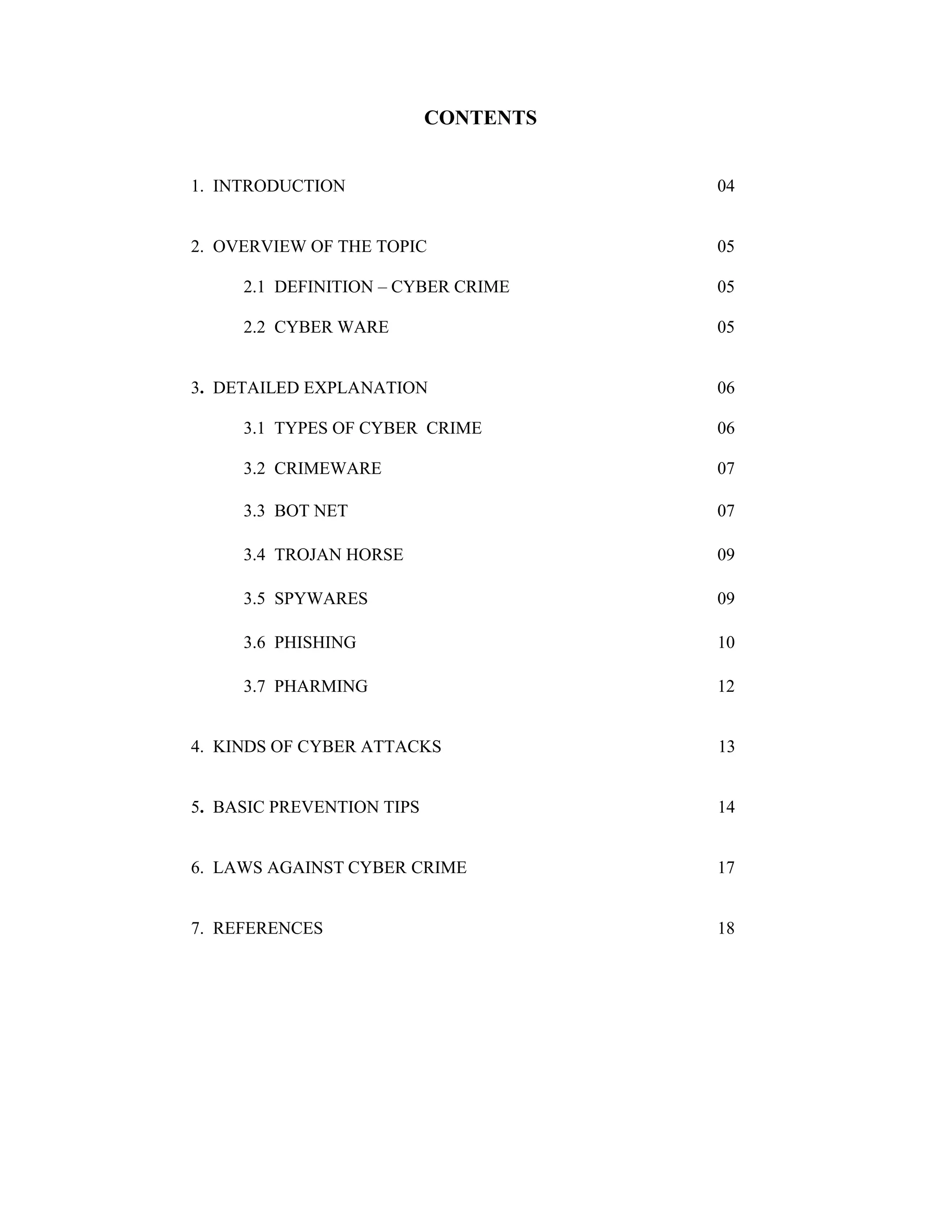
![Cyber Crime & Security
1. INTRODUCTION
Like traditional crime, cybercrime can take many shapes and can occur nearly
anytime or anyplace. Criminals committing cybercrime use a number of methods,
depending on their skill-set and their goal. This should not be surprising:
cybercrime is, after all, simply 'crime' with some sort of 'computer' or 'cyber'
aspect. Cybercrime has surpassed illegal drug tracking as a criminal moneymaker.
Every 3 seconds an identity is stolen. Without security, your unprotected PC can
become infected within four minutes of connecting to the internet. The Council of
Europe's Cybercrime Treaty uses the term 'cybercrime' to refer to offenses ranging
from criminal activity against data to content and copyright infringement [Krone,
2005]. However, others [Zeviar-Geese, 1997-98] suggest that the definition is
broader, including activities such as fraud, unauthorized access, child
pornography, and cyberstalking. The United Nations Manual on the Prevention
and Control of Computer Related Crime includes fraud, forgery, and unauthorized
access [United Nations, 1995] in its cyber-crime definition.
As you can see from these definitions, cybercrime can cover a very wide range of
attacks. Understanding this wide variation in types of cybercrime is important as
different types of cybercrime require different approaches to improving your
computer safety.
4](https://image.slidesharecdn.com/cybercrimereport-131118221059-phpapp01/75/Cyber-crime-report-4-2048.jpg)
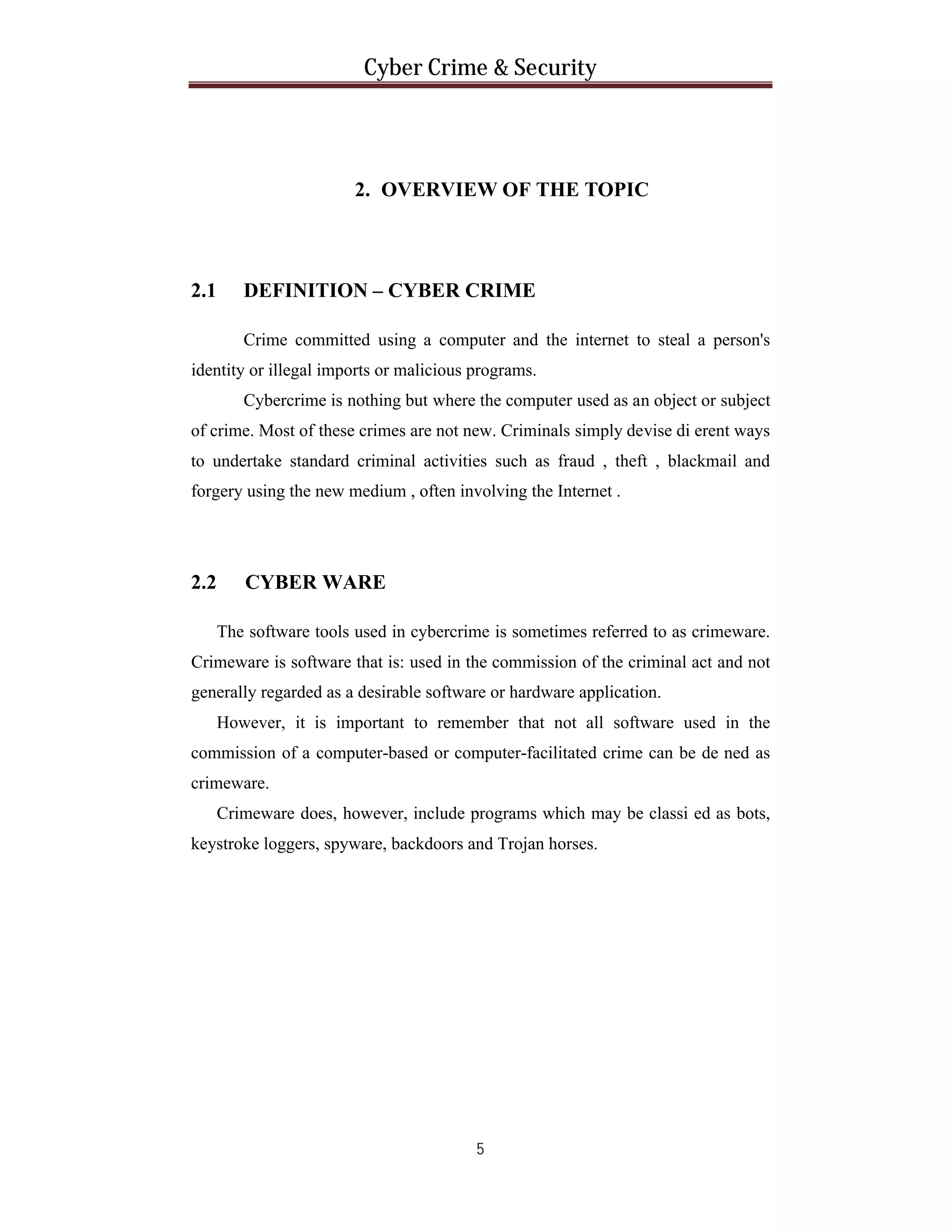
![Cyber Crime & Security
3. DETAILED EXPLANATION
Cyber crime is an evil having its origin in the dependence on computers in
modern life.
A simple yet sturdy definition of cyber crime would be unlawful acts wherein
the computer is either a tool or a target or both". Defining cyber crimes, as acts
that are punishable by the information Tech-nology Act" would be unsuitable as
the Indian Penal Code also covers many cyber crimes, such as e-mail spoofing,
cyber defamation, etc.
Cybercrime in a narrow sense (computer crime): Any illegal behavior directed
by means of electronic operations that targets the security of computer systems
and the data processed by them.
Cybercrime in a broader sense (computer-related crime): Any illegal behavior
committed by means of, or in relation to, a computer system or network, including
such crimes as illegal possession [and] offering or distributing information by
means of a computer system or network.
3.1
TYPES OF CYBER CRIME
Cyber Crime refers to all activities done with criminal intent in cyberspace. These
fall into three slots.
a) Those against persons.
b) Against Business and Non-business organizations.
c) Crime targeting the government.
6](https://image.slidesharecdn.com/cybercrimereport-131118221059-phpapp01/75/Cyber-crime-report-6-2048.jpg)

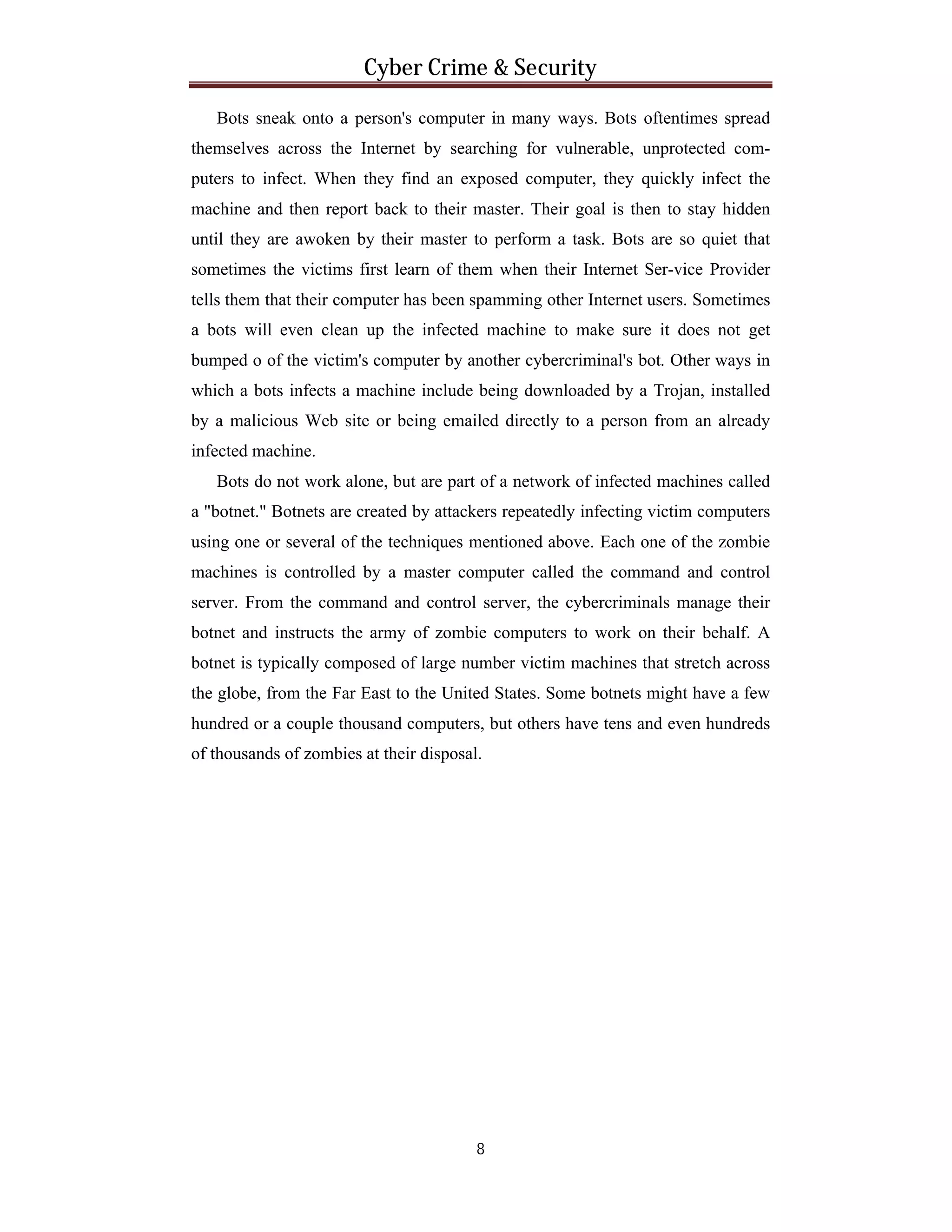
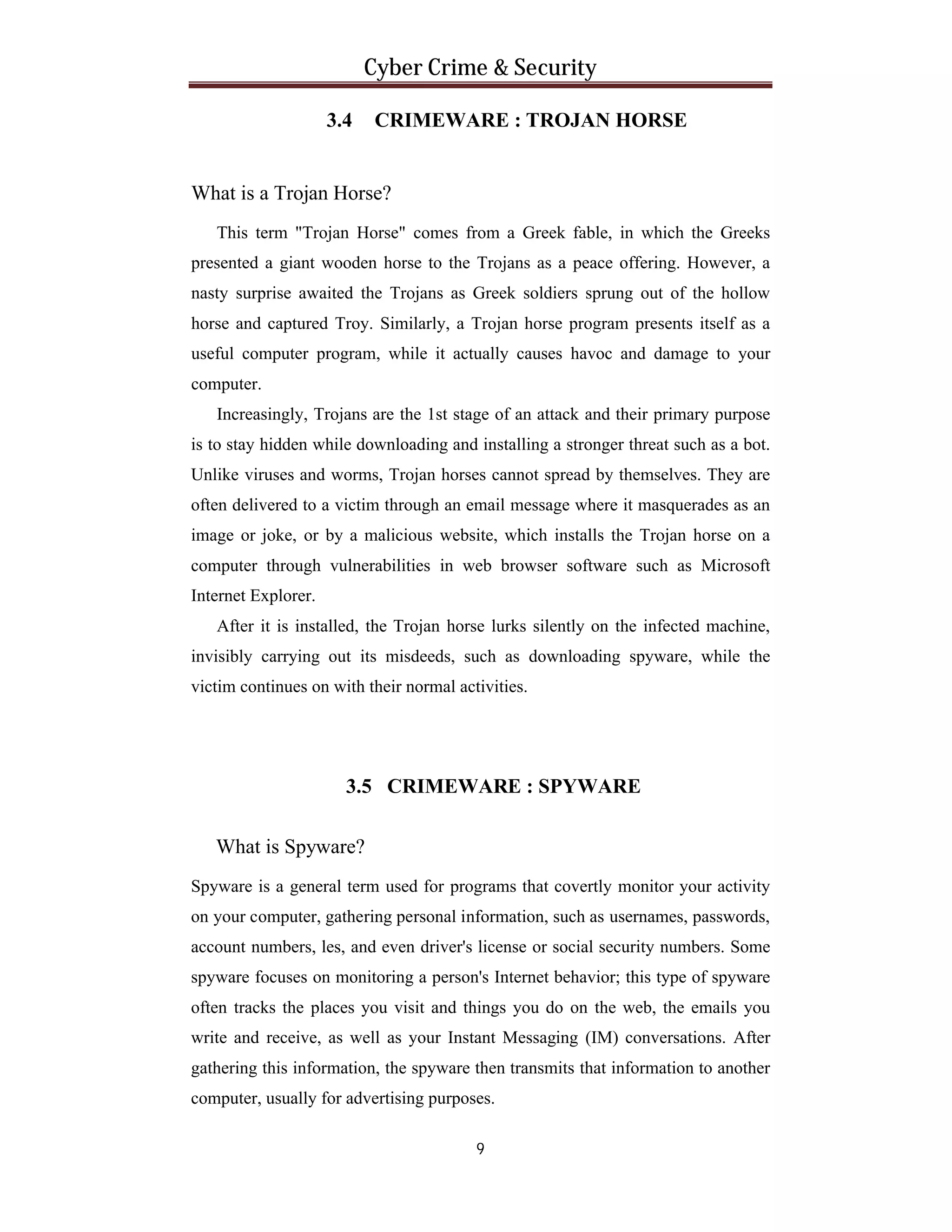

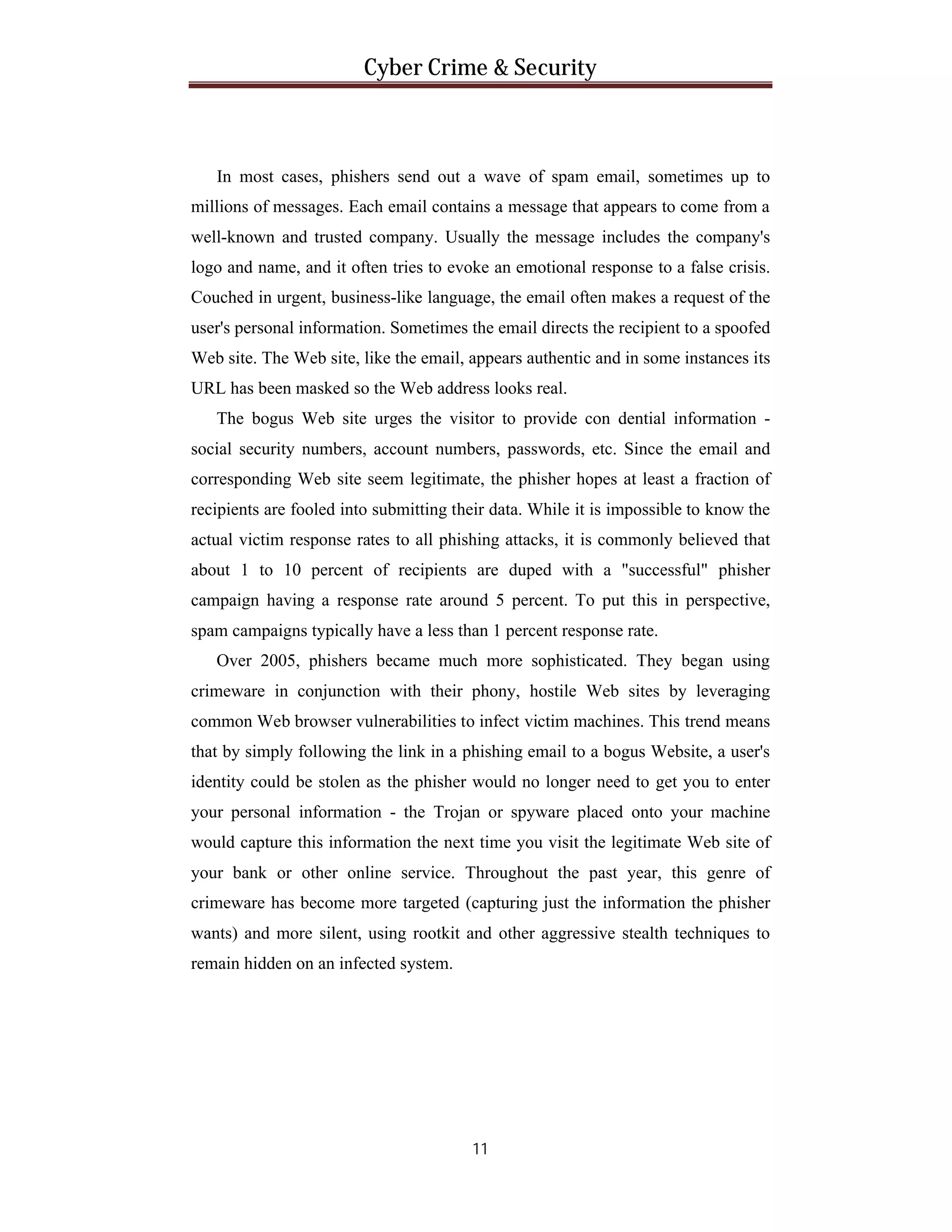
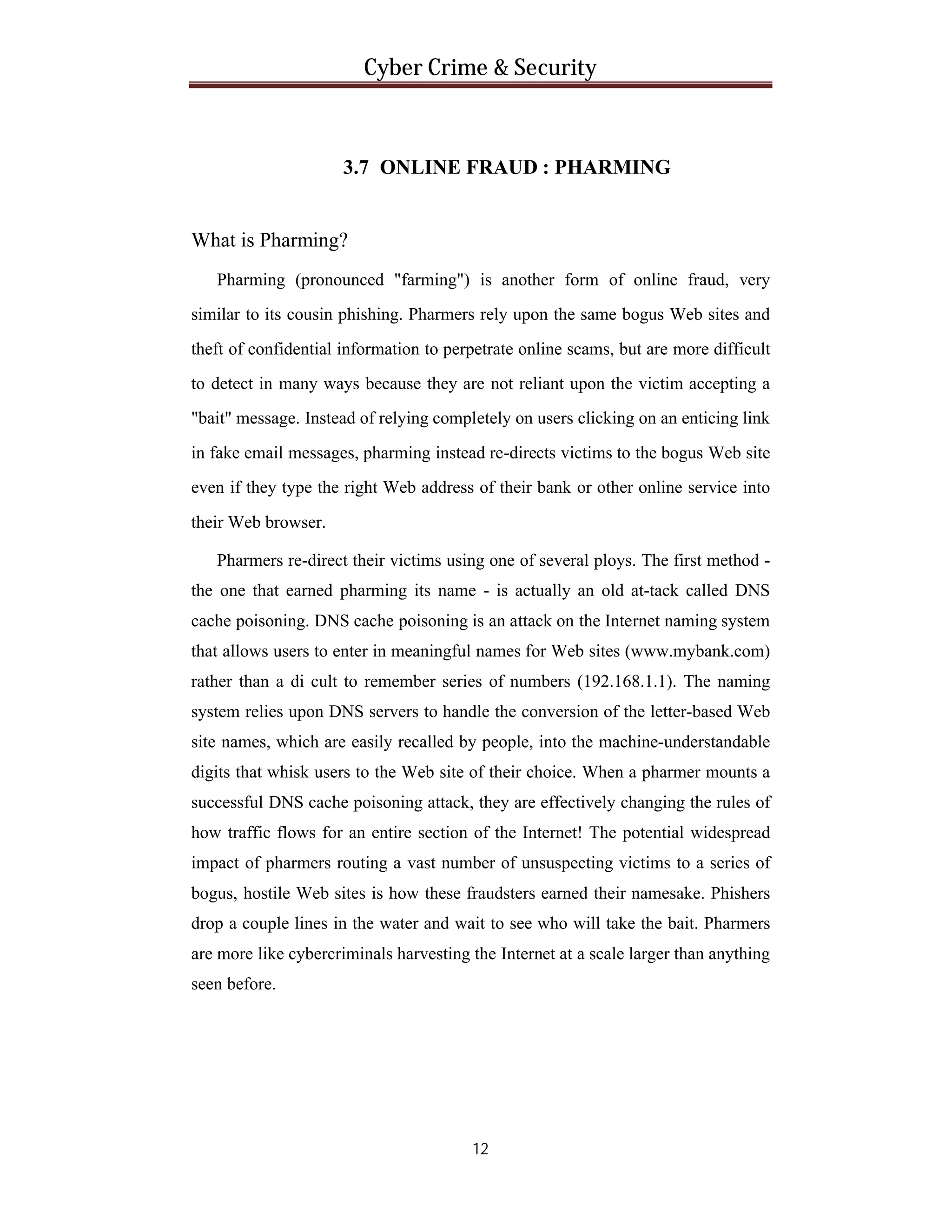
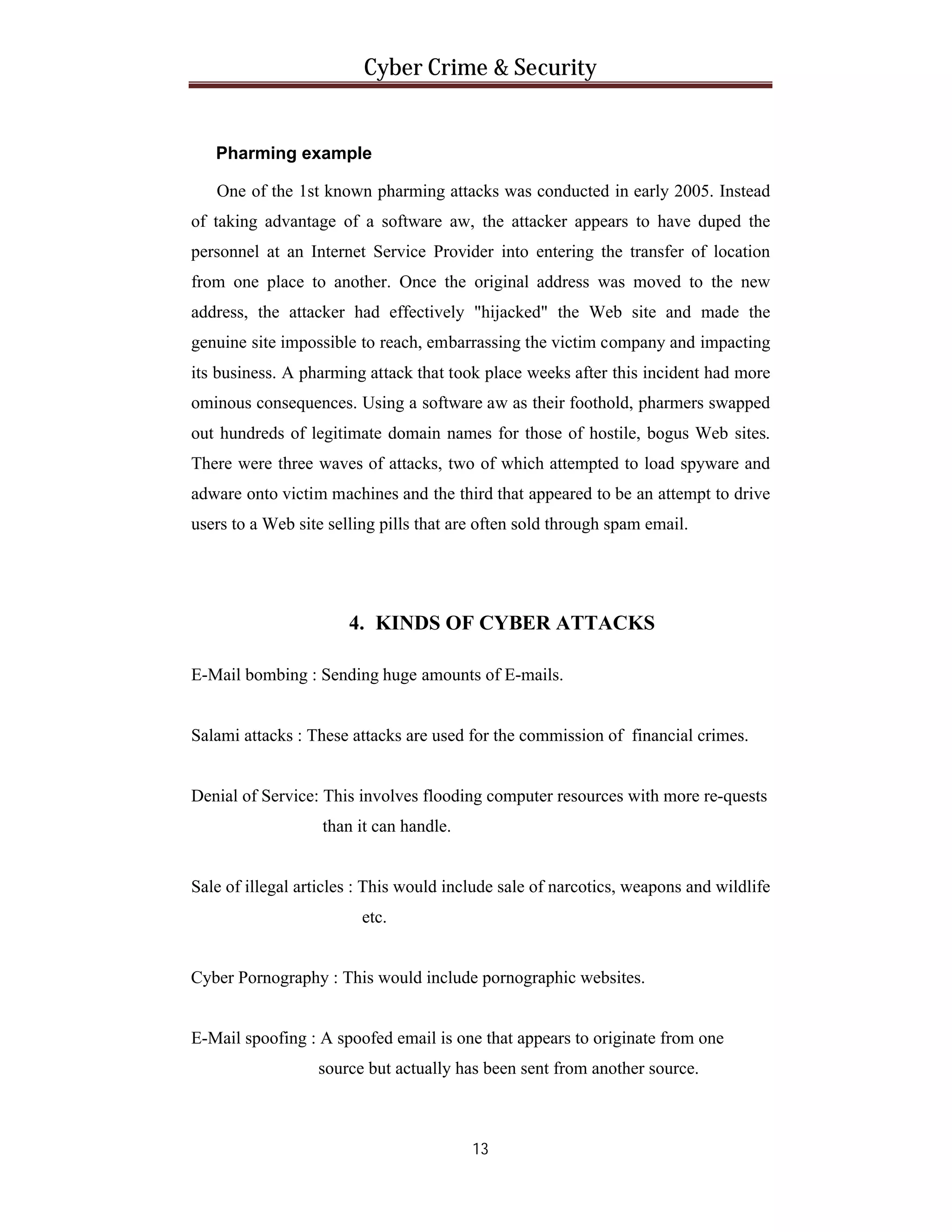
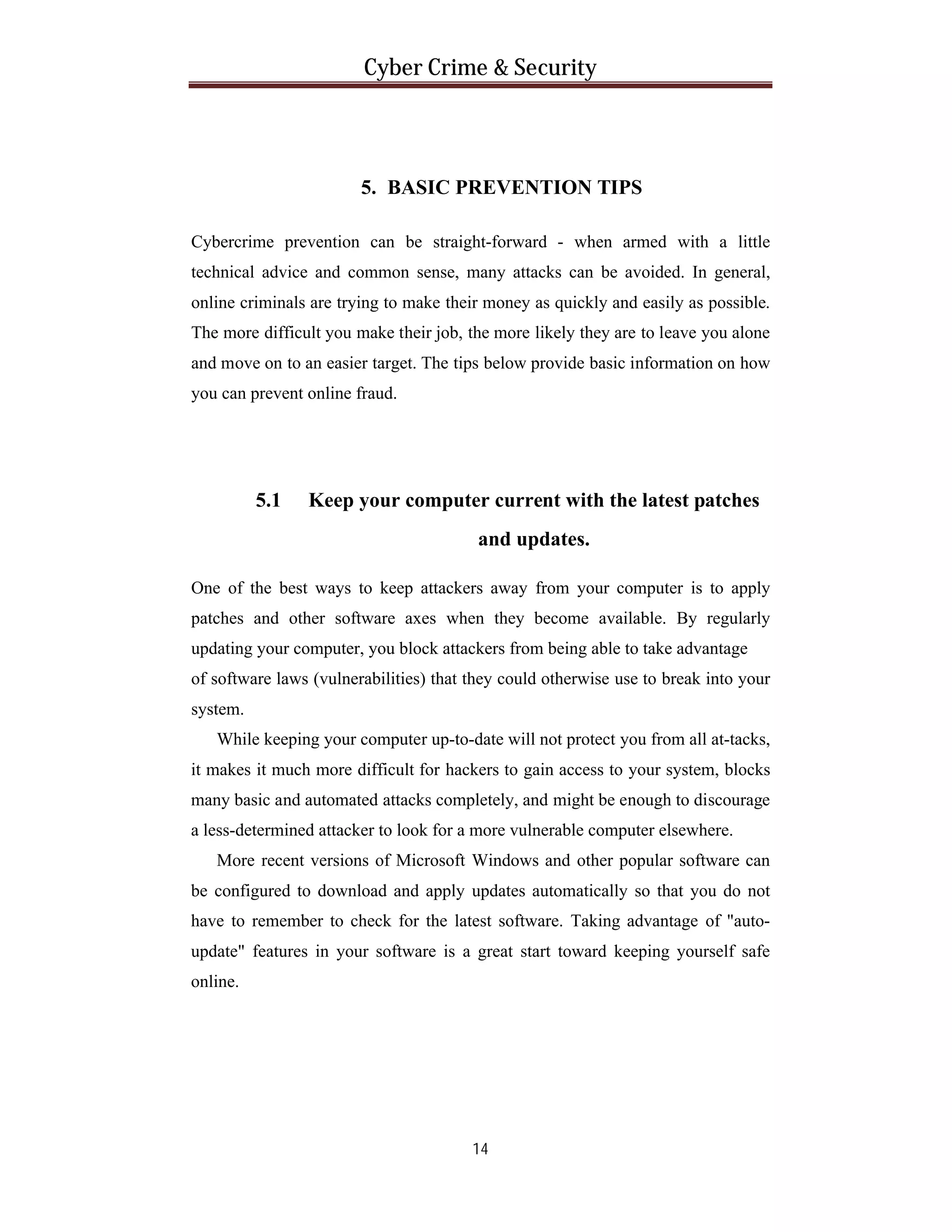

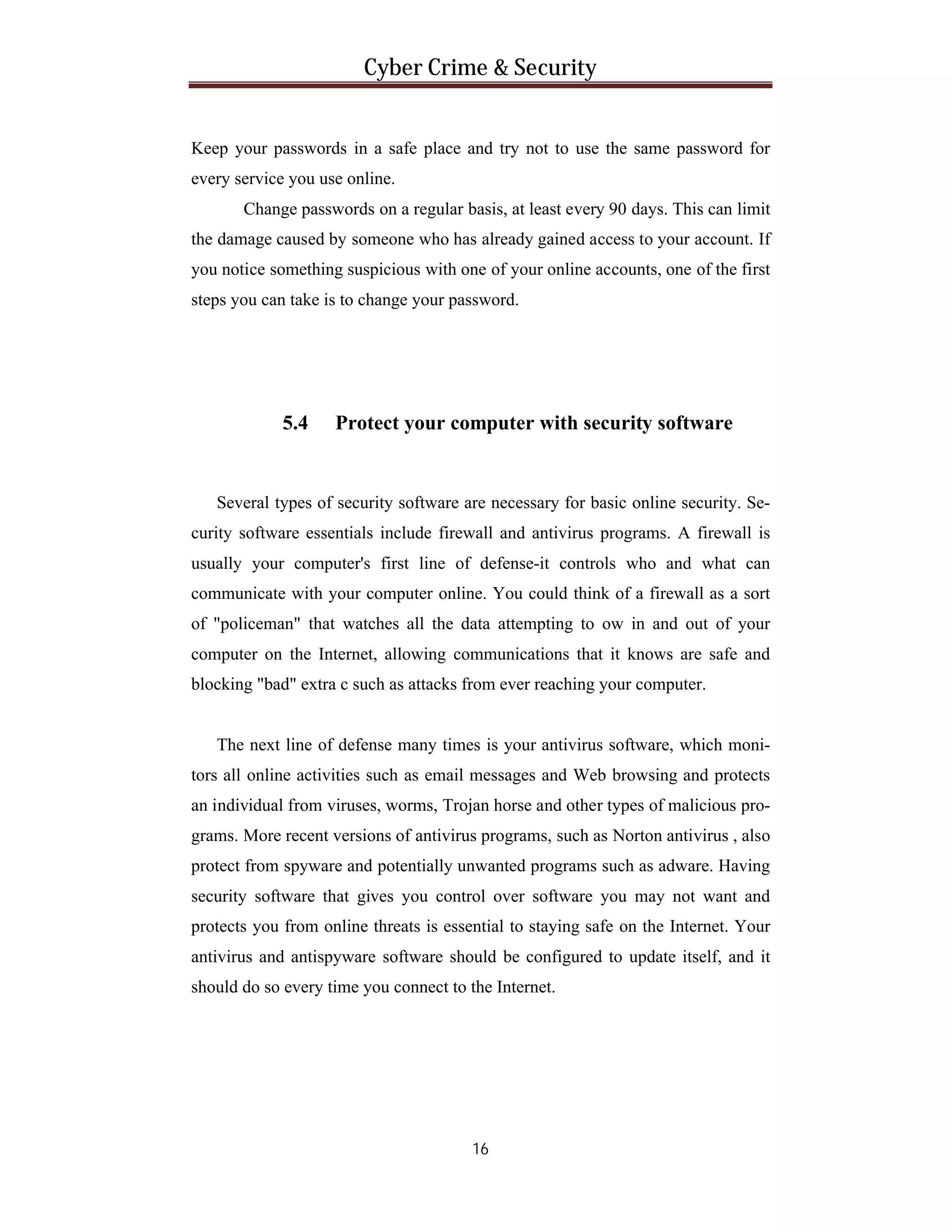
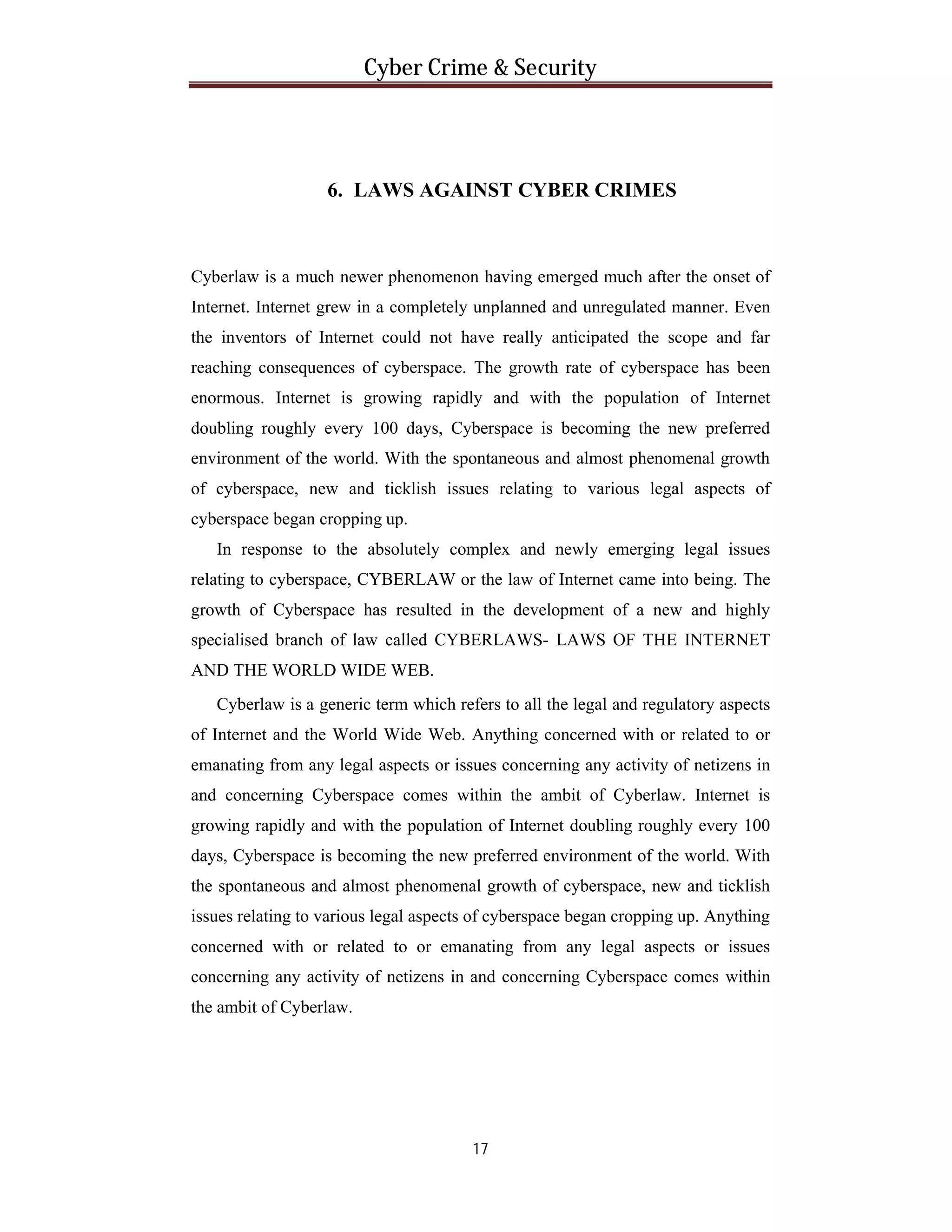
![Cyber Crime & Security
7. REFERENCES
[1]
Norton , Symantec Group.
http://in.norton.com/cybercrime
[2] Cyber Crime & E-Governance..
http://www.uniflorida.com/cybercrime
[3] SEMCOM Cyberlaw Clinic.
www.cyberlawclinic.org
[4] Cyber Crime Statistics in India
http://www.indiafacts.in
[5] Carnegie Cyber Academy - National Cyber Security Awareness.
http://www.carnegiecyberacademy.com
18](https://image.slidesharecdn.com/cybercrimereport-131118221059-phpapp01/75/Cyber-crime-report-18-2048.jpg)

